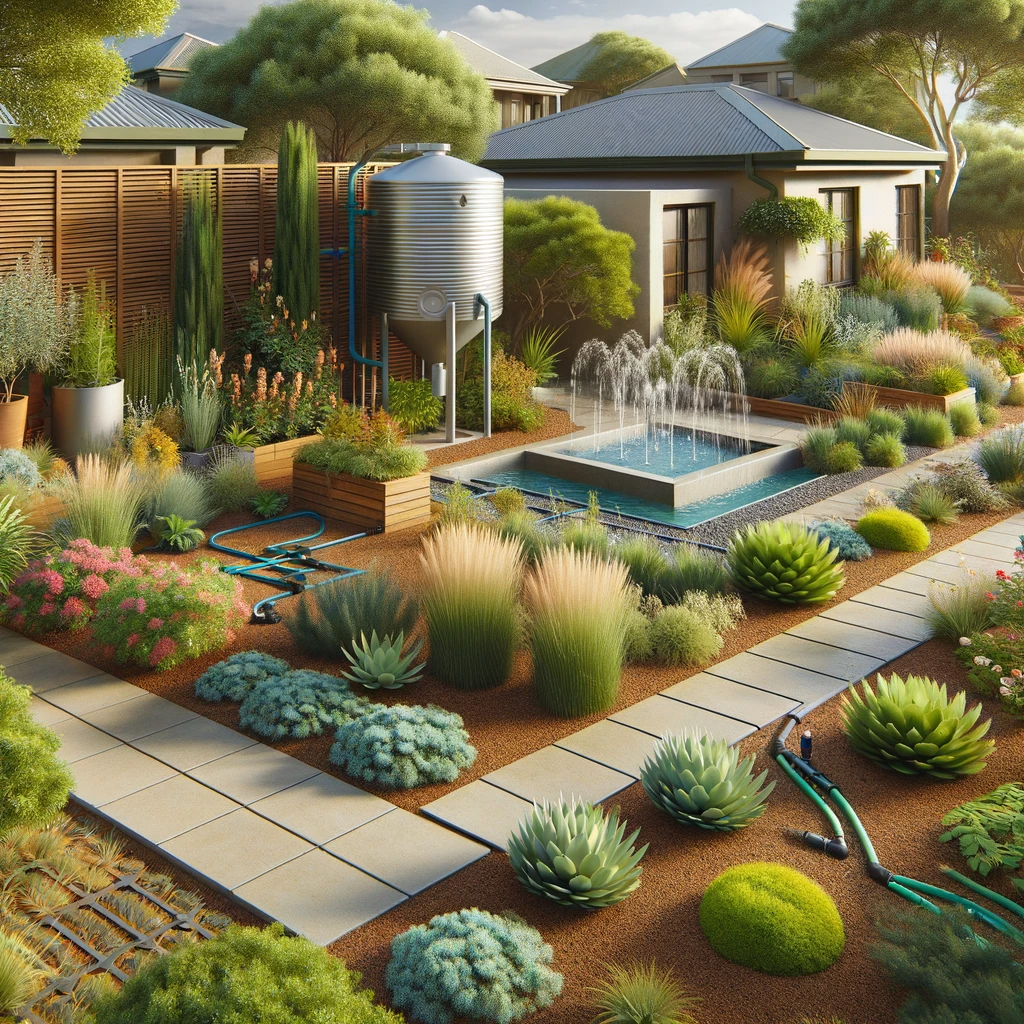Stamped concrete is a popular choice for outdoor surfaces, but it’s not the most sustainable option. Instead, you should consider water-wise sustainable landscape design for a more eco-friendly and long-term solution. In this guide, we’ll explore the benefits of water-wise sustainable landscaping, how to design your outdoor space with sustainability in mind, and the materials and techniques you can use to create a beautiful and environmentally-friendly outdoor area.
Benefits of Water-Wise Sustainable Landscaping
Water-wise sustainable landscaping offers various benefits that can help you save money and energy. By incorporating native plants and other sustainable solutions, you can reduce water bills, save energy, and protect the environment. Here are a few of the advantages of water-wise sustainable landscaping:
- Reduced water bills: Water-wise landscaping techniques help you reduce water bills by using less water. Native plants require less water than non-native varieties, and soil amendments such as mulch help retain moisture and limit evaporation.
- Reduced energy bills: By using efficient irrigation systems and planting native plants, you can reduce the energy used to maintain your landscape.
- Environmentally-friendly: Water-wise landscapes help protect the environment by reducing water waste and preserving native plant species.
Designing Your Water-Wise Sustainable Landscape
When designing your water-wise sustainable landscape, it’s important to consider the specific needs of your area. You should also think about your budget, the size of your outdoor space, and the type of plants you’d like to use. Here are a few tips to help you design a water-wise sustainable landscape:
- Choose native plants: Native plants are adapted to your local climate and need less water and maintenance than non-native varieties.
- Install an efficient irrigation system: Installing an efficient irrigation system will help you save water and energy. Make sure your system is properly maintained and adjusted to match the needs of your plants.
- Use natural materials and techniques: Natural materials and techniques such as mulch, compost, and drip irrigation can help you create a sustainable landscape.
- Consider the size of your space: If you have a small outdoor space, make sure to select plants that don’t require a lot of water or maintenance.
Materials and Techniques
Creating a sustainable landscape doesn’t have to be difficult. Here are a few materials and techniques you can use to create a beautiful and eco-friendly outdoor area:
- Mulch: Mulch helps retain moisture in the soil and reduce evaporation, making it an important component of water-wise landscaping.
- Compost: Compost is a great way to add nutrients to your soil and reduce water waste.
- Drip irrigation: Drip irrigation is an efficient way to water your plants without wasting water.
- Native plants: Native plants are adapted to your local climate and require less water and maintenance than non-native varieties.
- Rain barrels: Rain barrels are a great way to capture and store rainwater for use in your landscape.
- Permeable surfaces: Permeable surfaces such as gravel can help reduce water runoff and prevent soil erosion.
Conclusion
In conclusion, water-wise sustainable landscaping is an important component of creating an eco-friendly outdoor area. By using native plants, efficient irrigation systems, and natural materials and techniques, you can reduce water bills, save energy, and protect the environment. With a little bit of planning and creativity, you can create a beautiful and sustainable outdoor space.

